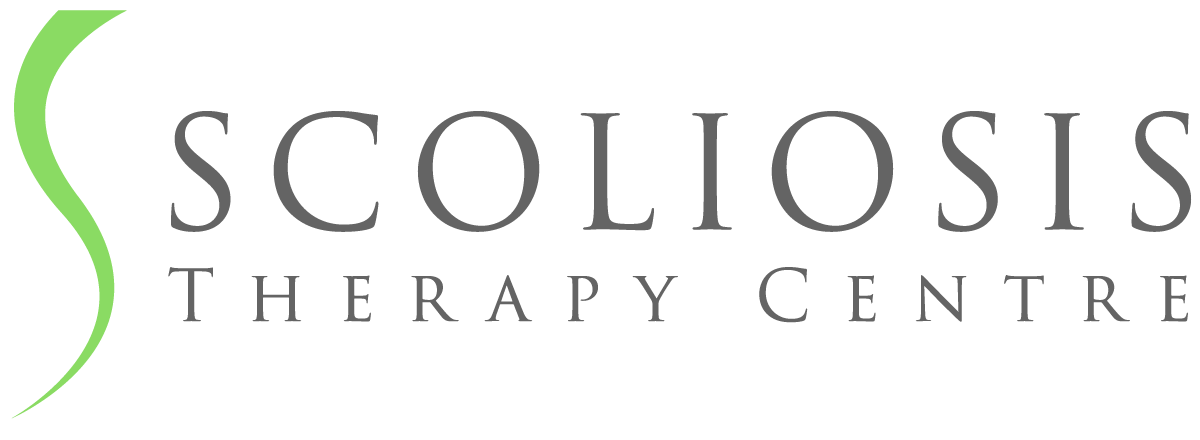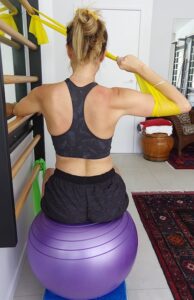Schroth 3D Scoliosis Therapy Program
Provides a gentle holistic exercise treatment which can improve health related quality of life For juveniles, adolescents and adults who have idiopathic scoliosis.
Our Schroth 3D Program is designed for patients and families seeking an alternative, one on one, Non-surgical, conservative treatment solution.
Schroth 3D Scoliosis Exercise Therapy can help prevent curvature progression; improve aesthetics, function and mobility; and avoid spinal fusion surgery.
Quick Links enables you to easily navigate our Program's Content, Structure, location and nearby accommodation options.
Quick Links
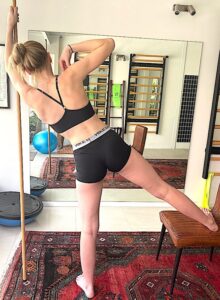 Schroth 3D Therapy Program Goals
Schroth 3D Therapy Program Goals
- Avoid surgery,
- Improve aesthetics
- Improve quality of life
In providing conservative treatment to achieve these goals our focus is on:
- Stopping curve progression at puberty (or possibly even reducing it)
- Improving lung capacity and rib mobilization through corrective breathing.
- Preventing or treating spinal pain syndromes
- Improving aesthetics via postural correction
Schroth 3D Therapy Components
Our 6 day Schroth 3D Scoliosis Therapy Program comprise the following components:
- Part 1: Initial Assessment Consultation
- Part 2: Customised Scoliosis Exercise Therapy Sessions
- Part 3: Schroth Method Home Exercise Program Manual
- Part 4: Schroth Method Home Exercise Program Notes
- Part 5: Education in Activities in Daily Living
Part 1: Initial Assessment Consultation
The initial assessment consultation is an integral part of the program and includes 4 steps:
- X-Ray Review: Before commencing Schroth 3D scoliosis exercise therapy with a patient, existing x-rays and reports are reviewed. It is essential that the patient presents at our Centre with a current set of x-rays, radiologist and orthopaedic specialist reports, as well as any other relevant medical history. X-rays need to have been taken in weight bearing (Erect) position, showing a Posterior-Anterior (PA) view of the full spine, and a Lateral (sagittal) view. X-rays highlight the radiological characteristics of the scoliosis curve pattern, any associated spinal degeneration, and enable the degree of curvature to be measured by the Cobb Angle method.
- Photography Review: A Therapist in our Centre photographs the patient while standing from 4 positions, front and back, and both sides. The photographs provide evidence of the clinical characteristics (what we see), establishing the three dimensional clinical characteristics of the patient’s scoliosis curve pattern, and trunk distortion. The radiological and clinical characteristics should concur with one another to correctly diagnose the patient’s scoliosis curve pattern.
- Measurements: In addition to measuring the scoliosis curvature by the Cobb Angle method, the Angle of Trunk Rotation (ATR) is verified by the Therapist using a Scoliometer. The patient’s vital capacity is measured using a Spirometer. The patient’s height is recorded on initial presentation, and any loss of function noted due to scoliosis progression.
- Awareness: In preparing patients for their program of Schroth 3D scoliosis exercise therapy, patients are taught how to: describe their pattern of scoliotic posture in Schroth terminology; the need for postural awareness; how to make pelvic corrections relevant to their curve pattern; and how to stabilize corrected posture.
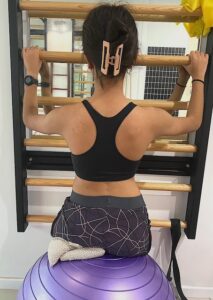 Part 2: Customised Scoliosis Exercise Therapy Sessions
Part 2: Customised Scoliosis Exercise Therapy Sessions
A program of Schroth 3D scoliosis exercise therapy is customized for patients based on their Major Idiopathic Curvature Type.
Scoliosis specific therapy exercises in the treatment of adolescent idiopathic scoliosis must provide:
- Three dimensional (3D) auto postural correction
- Training in activities in daily living (ADL)
- Stabilization of corrected posture
- Patient education
Patients perform their therapeutic exercises during the twice daily two hour sessions with the assistance of mirrors, and tactile cueing and feedback from the Schroth Therapist. Once patients have achieved optimal corrected posture for a specific therapeutic exercise, the Therapist takes a photograph of the patient performing the exercise.
Photographs taken are included in Schroth 3D Home Exercise Program (HEP) notes, specifying the therapeutic goals of each exercise, and how to perform them.
The need for patients to be focused on positive corrective changes in postural alignment, made possible by each specific Schroth 3D therapeutic exercise, is reinforced throughout daily sessions. Exercise therapy sessions are the precursor to consciously adopting a long term symmetrical, more physiological posture in ordinary activities in daily living (ADL). The benefit of adopting a symmetrical posture is that it can help prevent curve progression.
The effectiveness of Schroth 3D scoliosis exercise therapy is largely dependent on the ability and commitment of patients, and in the case of juveniles and adolescents, their parents as caregivers, to carry out the prescribed Schroth 3D exercise program.
Parents accompanying their child/teenager patient to one our Patient-Parent Programs are also coached in the Schroth Method. Coaching enables parents to provide support for the prescribed Schroth 3D Home Exercise Program (HEP).
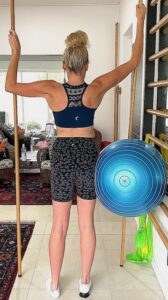 Part 3: Schroth Method Home Exercise Program Manual
Part 3: Schroth Method Home Exercise Program Manual
The Schroth 3D Home Exercise Program (HEP) Manual given to each patient includes:
- Their Pattern of Scoliosis
- Schroth Terminology
- Postural Awareness
- Pelvic Corrections
- Schroth Corrective Breathing
- Home Program Weekly Schedule
- Schroth Method Home Exercise Program (HEP)
Part 4: Schroth Method Home Exercise Notes
The notes for each Schroth 3D Home Exercise is set out in the following manner and includes a photograph of the patient performing each exercise in an optimal corrected posture.
- Exercise Name - Helps facilitate the Schroth Method teaching process.
- Main Focus - Therapeutic goals of each specific exercise: postural alignment; muscle rebalance; endurance.
- Positioning - Basic 3D corrections for the whole body from the pelvis (including lower limbs) upwards. Positioning is different for each scoliosis pattern.
- Elongation - Active elongation of the spine upwards from the pelvis after achieving basic 3D corrections. Hold the corrections and exhale.
- Exercise - The ‘main part’ during which specific muscle tension and Schroth corrective breathing facilitate postural correction and 3D stabilization. After the initial exhale, continue Schroth corrective breathing cycles throughout each exercise.
- Sets and Repetitions - Exercises are repeated a number of times (sets). Each set includes a number of Schroth corrective breathing cycles (repetitions)
- Variations - In some instances, it’s possible to perform a specific Schroth 3D exercise with the same main focus, but with different positioning: standing, sitting or kneeling.
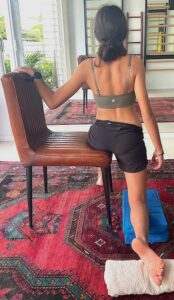 Part 5: Education in Activities in Daily Living
Part 5: Education in Activities in Daily Living
Introducing Schroth Method therapeutic elements into ordinary activities in daily lifving (ADL) helps a patient reduce the asymmetric loading on the main scoliosis curve and lessens the risk of further progression.
Gaining awareness of the differences in postural alignment, by engaging in Schroth therapeutic scoliosis exercises, a patient develops a consciousness about postural correction, which with practice, becomes intuitive.
Patients develop a consciousness about postural correction in ADL through their participation in a program of Schroth customised scoliosis exercise therapy sessions. Training in ADL begins from the outset, during the rest interval between sets of Schroth therapeutic scoliosis exercises.
How patients: stand; sit; lay down on their front, back or side; walk; shower or dress; and engage in dynamic recreational activities such as sport or dancing, requires a conscious postural correction, ultimately an intuitive correction!. ADL is an intuitive element of the Schroth Method of Scoliosis exercise therapy.
Quick Links
Schroth 3D Therapy Program Structure
6 Day Program
- 24 hour program scheduled over 6 days, plus 1 rest day
- Sunday to Saturday
- Rest Day: Wednesday
Day 1 of each program includes: 1 x 2 hour assessment consultation, plus a 1 x 2 hour scoliosis exercise therapy session.
Day 2 onwards for each program includes 2 x 2 hour scoliosis exercise therapy sessions - 1 morning and 1 afternoon.
Download a PDF Summary of the Content, Scope and Structure of our Schroth 3D Programs:
Juvenile & Adolescent idiopathic scoliosis
Adult idiopathic & Degenerative Scoliosis
Our Program excludes travel and accommodation costs.
Quick Links
Travel & Accommodation
The Scoliosis Therapy Centre is located south of Brisbane, Australia, at 7114 Marine Drive East, Hope Island, Qld 4212.
- Brisbane Airport to Sanctuary Cove: 75km (approx. 60 mins by car)
- Coolangatta Airport to Sanctuary Cove: 51km (approx. 48 mins by car)
Flights
For interstate patients, Jetstar, Qantas and Virgin Australia operate flights from all major interstate capitals to Brisbane and Coolangatta Domestic Airports.
For international patients, many operators fly from Asia and New Zealand to Brisbane and Coolangatta International Airports.
Accommodation
Sanctuary Cove is situated just north of the Gold Coast, a popular tourist destination for Australian and international visitors.
A wide range of accommodation options are available in nearby beachside towns, just a short drive (15 to 35 minutes) away from our Scoliosis Therapy Centre. Search on Google for Airbnb for accommodation in:
- Hope Island
- Paradise Point
- Runaway Bay
- Biggera Waters
- Surfers Paradise
Alternatively, within Sanctuary Cove, there is also the Intercontinental Sanctuary Cove Resort Hotel.
Go to Tripadvisor, Trivago and Wotif websites for competitive accommodation rates.
Quick Links
Enquire About our 6 Day Therapy Program
